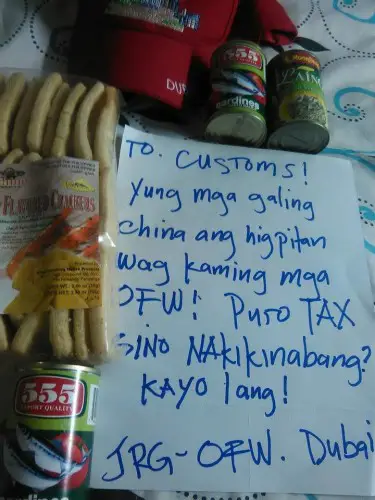“It’s the biggest open secret in Manila,” a veteran broker put it. “Biggest as I’ve never seen such blatant smuggling ever in my 30 years in this business. Open because we brokers all know it and how to do it. And secret, as this government has managed to keep under the public radar, what is really their biggest racket.”
 |
| Photo: Philnews |
While President Aquino and his Bureau of Customs have moronically focused on opening OFWs balikbayan boxes to squeeze more revenues, smuggling by big-time traders has exploded to unprecedented levels under this regime.
Nearly one-fourth of imports into the country in the last five years have been unreported and untaxed, totaling $94 billion – for an astronomical P4 trillion. That’s more than four times the estimated smuggled value of just $21 billion from 2005 to 2009.
The Aquino government lost revenues from duties and value-added taxes on these smuggled goods in the last five years, totaling P760 billion, as a result of the massive collusion between traders and the Bureau of Customs, the likes of which had never been seen in the country’s postwar history.
To give you an idea of the magnitude of those P760 billion foregone revenues, that could have doubled the budget of the public works department to start the building of two MRT-type of mass transport systems to solve the horrendous traffic problem in the metropolis. Alternatively, it could have doubled the education department’s budget so that the poor will enjoy totally free education.
Aquino’s failure to curb corruption is one of his biggest sins against the nation, which remarkably though he has been able to keep largely unnoticed.
These figures are based on data from the International Monetary Fund’s Direction of Trade Statistics, which allows us to compare exports to the country as reported by the exporting country, and the Philippines’ imports, as reported by the Bureau of Customs, to come up with an estimate the value of smuggled goods.
The discrepancies in the two sets of figures may in part be due to reporting errors, for instance due to different reporting times. However, especially when the discrepancies involve significant amounts and when a time-series is available, the methodology approximates the magnitude of smuggling in a country. The methodology has been routinely used by international-trade economists and multilateral institutions.
The validity of the method is such that the import figures for other countries known to be relatively free of smuggling – such as Europe and Saudi Arabia– do not show such massive discrepancies. (Read the note at the end of this column if you’re interested in the details of this methodology).
The accompanying table and chart show that the estimated value of goods smuggled into the country jumped as soon as Aquino took office, rocketing in 2009 from just $8 billion in 2009 or just 15 percent of the imports as reported by the exporting countries to $26 billion last year, more than a fourth of the actual imports.
“It’s the biggest open secret in Manila,” a veteran broker put it. “Biggest as I’ve never seen such blatant smuggling ever in my 30 years in this business. Open because we brokers all know it and how to do it. And secret, as this government has managed to keep under the public radar, what is really their biggest racket.”
The broker added “Just go to Divisoria or any mall, or any supermarket, and you won’t have a doubt at all that smuggling has been so rampant under this administration. It’s been institutionalized.”
“I don’t mind, of course,” he quipped with a smile.. “A Johnny Walker Black 1-liter costs $55 (P2,400 at P44 to $1) in places I’ve visited abroad. Here a popular supermarket sells it for just a bit less than P1,000.” - by Rigoberto Tiglao, full story on The Manila Times



